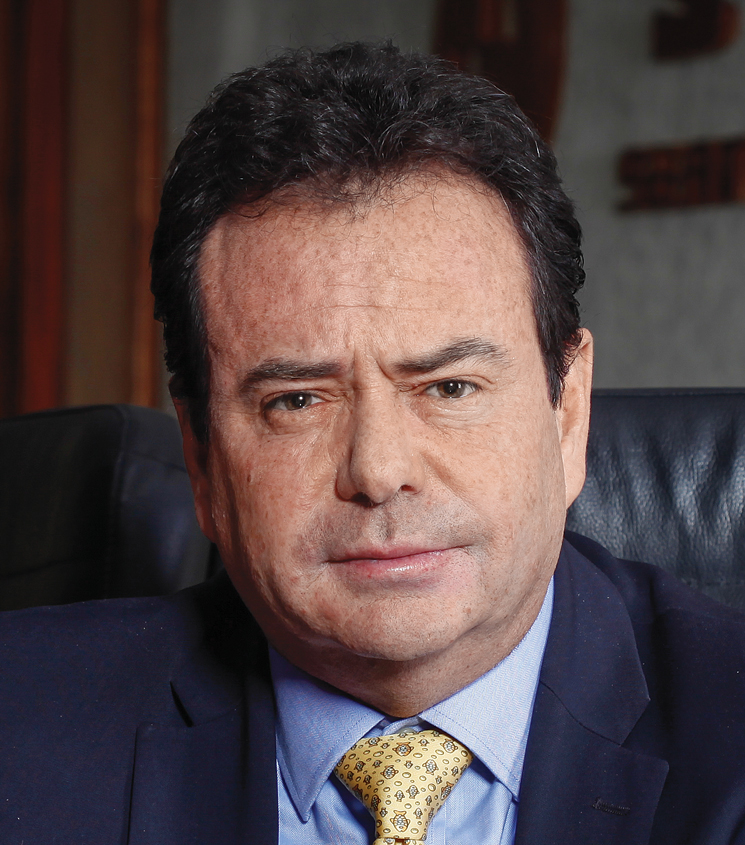Looking at the Near Future and What it May Hold

STORY INLINE POST
Many of the various challenges and risks that were mentioned in our last article in August are persisting, if not intensifying, such as the war in Ukraine with Russia, the geopolitical tension in Asia, the relationship between the US and China and the political and economic situation in Latin America.
Additionally, we discussed the negative economic repercussions and the manner in which other nations have confronted COVID-19.
I believe it is also appropriate to mention some other factors that have had an effect on our daily life. For instance, global climate change and the lack of commitment from various countries and cities during the COP27 meeting in Egypt, midterm elections in the US and the division between the Democratic and Republican parties, Donald Trump's decision to run for president for a third time, increased polarization and populism in Latin America, including antidemocratic measures, and the widening gap between the rich and the poor in the region and worldwide.
The global economic situation is extremely uncertain, the financial markets are highly volatile, and analysts and experts have lowered their projections for economic growth in 2023. Inflation will remain high, as will interest rates, likely with a gradual decline in the second half of 2023, which will impact the movement of capital and investments in many regions of the world.
Another essential concern is the impact of economic growth, interest rates, and inflation on the short-term behavior of major currencies, such as the US dollar, euro, Japanese yen, and Mexican peso.
Due to international causes and some favorable internal indicators such as stable public finances, growth in manufacturing exports, and the significant potential of T-MEC, the Mexican peso has become one of the strongest currencies in the world. Despite some difficulties with our primary trade partner in the north, particularly in energy, the rules of origin in the automobile sector, and some commodities, as highlighted in August, these issues are still under negotiation. It is important to mention that in our case, all the main negotiators have recently been changed to other public servants who do not have enough experience in negotiating international commerce treaties. Let's await the ultimate result.
The US$60 billion component of remittances this year and the US$80 billion net positive trade balance in the automobile industry, including auto parts, are equally significant with the current level of our currency, as are the autonomous actions of the Mexican Central Bank regarding monetary policy .
Nearshoring investments originating primarily in Asia see a great deal of potential in Mexico due to our competitive advantages in terms of labor force and technology.
In recent weeks, the Mexican president's political radicalization against democracy, the autonomy of the Electoral Institute, and modifications to the electoral rules have been clearly apparent. Society has reacted proactively and organized, defending against a return to the former practices in which the Mexican government dominated elections.
The president’s approach has been to downplay and diminish those who oppose his initiatives and ideals. I am certain that this is just the beginning of the government's confrontations and propaganda against those who disagree with the executive branch leading up to the elections in 2023 and notably the presidential election in 2024. In Congress, with the exception of Morena, the opposition among the political parties will play a major role.
We can continue to delve into the political, social, and economic situation in Mexico, but many factors and decisions will change in the coming months. The prevailing uncertainty that has marked the current government administration, however, will continue.
In the automotive sector, we have still been unable to achieve pre-pandemic levels of sales of light cars, while continuing to experience low inventory levels due to the lack of semiconductors, which we feel may progressively improve. We anticipate this gradual progress to occur sooner rather than later.
This situation has yielded excellent financial benefits for virtually all brands operating in Mexico, but the advantage may be short-lived due to the slow availability of automobiles in stores. Once we return to normal levels, dealers will face greater financing costs and operating margins will be reduced.
Numerous OEMs have significantly committed to improving the local market by selling and manufacturing more light vehicles and trucks to increase their market share. In addition to clean energy, electric and hybrid products and improved mobility are among their priorities.
Depending on the scenario up until the end of the year, I believe that sales of light automobiles in 2022 will be in the range of 1.05 million units, according to different projections of many specialists.
To conclude, we must be realistic about the global and domestic issues affecting this key industry for the Mexican economy, but the short-term outlook is for a moderate recovery and the medium- to long-term is more encouraging.








 By Guillermo Prieto Treviño | Independent Contributor -
Mon, 12/19/2022 - 13:00
By Guillermo Prieto Treviño | Independent Contributor -
Mon, 12/19/2022 - 13:00















